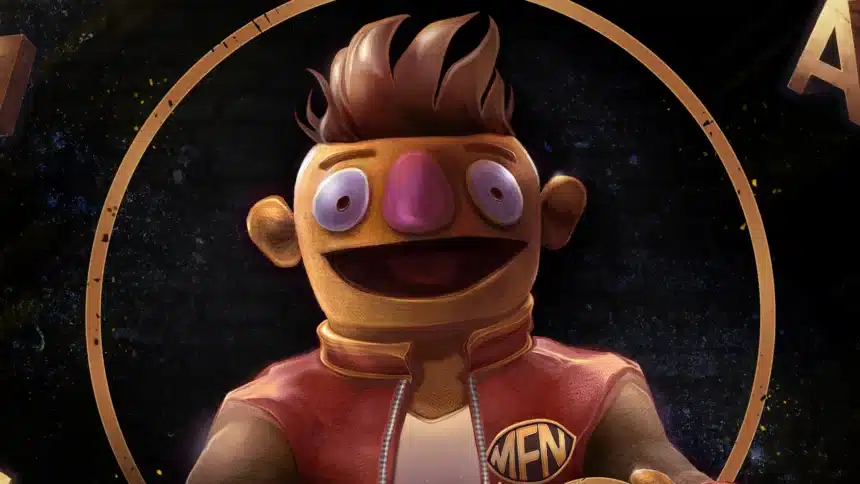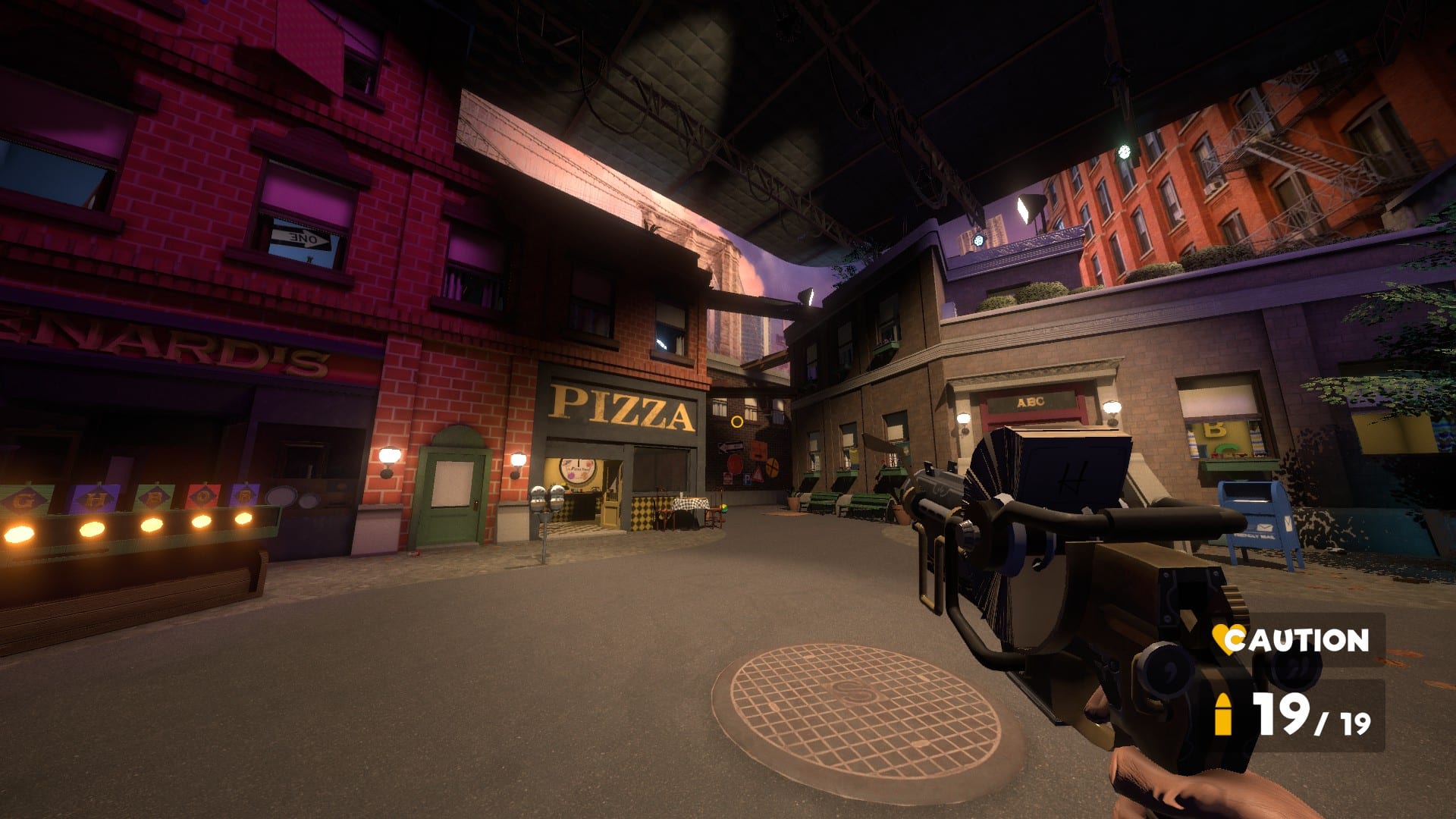Have you ever wondered what would happen if Sesame Street had an unofficial video game adaptation that played a lot like Resident Evil? No? Well, John and Evan Szymanski apparently did, and the result is My Friendly Neighborhood, a not so scary, but fairly creepy first-person survival horror title that should be on your radar. In this My Friendly Neighborhood Review, I’ll talk about what I thought about the creepy puppet-filled ride.
Story and Setup
You play as Gordon, a repairman sent to investigate and fix the antenna atop the main building of the “My Friendly Neighborhood” studio that has suddenly started broadcasting episodes of an old show of the same name. It’s a simple premise that gradually escalates into something dark, and sinister the more you venture deep into the many sets and offices of the studio.

It doesn’t take long for you to witness all the puppets coming to life all around the premises. While initially spooked, Gordon is largely unfazed by his current puppet predicament. The only other character you have conversations with is a sock puppet named Ricky. He isn’t really a threat and usually tries to convince you to let go of your quest.
I like Gordon, he doesn’t say much, but his reactions to key moments in the story are always believable, partly because of his excellent voice acting. This is a consistent quality of the game, and all the puppets have a bunch of lines that are voiced well. While they keep repeating themselves after a certain point, and you’ll hear the same dialogue from different puppets, it adds to their general creepiness of them rather than feeling repetitive.

As you explore different sections of the studio, you’ll find out more about why exactly this children’s franchise met its demise, and people moved onto different shows. While the immediate story is fun to follow on its own, digging through the sparse documents you’ll find is fulfilling, and there’s a clear effort put into creating a timeline of the studio’s success and eventual downfall.
Combat and Enemies
My Friendly Neighborhood plays like a first-person shooter, but you aren’t really encouraged to blast away at enemies all the time. Most of the basic enemies in this are puppets that do a grab (hug) attack if you get into their proximity. This takes some getting used to because they kind of lunge towards you and close distance fast. Four hugs are enough to take you out.

You start off with a wrench, but your arsenal grows from a Rolodexer, which is a handgun that shoots alphabets to a shotgun and more. The game plays a lot like classic, and modern Resident Evil titles, in more ways than one. First off, you can’t really headshot enemies because the aiming isn’t precise, even with the reticle enabled. Some might go down with just two shots, and others might take six bullets alphabets.

You are encouraged to stun them with a few shots and finish them off with your trusty wrench. But it doesn’t stop there, because if you leave the room, and come back, the enemy will be back as well. To get rid of them completely, you need to “tape” them, so they’re immobile. This is similar to how you had to burn zombies in earlier Resident Evil titles to fully finish them off.
There is a lot of appreciation for Resident Evil games here and I commend the developers trying to bring back mechanics that simply faded away from mainstream horror titles. There are a few “boss fights” as well, but those aren’t too difficult in my opinion, and there are alternate ways of dealing with them.
Inventory Management and Saving
Inventory management is similar to Resident Evil 4 with a grid-based case that you interact with in real-time. I love the animation of Gordon pulling the case out in front of him and making decisions on the fly. You’ll organize items, stash away additional things in safe rooms, and discard things when necessary. You read documents and the map in a similar fashion.

One problem I do have with the map is that you can’t really zoom or scale it. It’s hard to read at times, and I would’ve liked some accessibility options here. It could have been a map bug because the text is barely legible. Your character icon blinks on it too, but again, there is a readability concern here that I hope the developers address in a patch.

Now, you save the game at save stations in safe rooms using an in-game item called “Token”, which is of limited quantity. Additionally, you have the choice to fully restore your health using a token too. This is something that might not sit well with every player, and again, it’s a mechanic from older Resident Evil titles, where you used limited ink ribbons to save your progress. Some key moments make use of the auto-save, but it’s hard to tell which ones really count.

I ran out of tokens at a few instances, and there was always this feeling of dread that I’d lose a lot of progress if I died. While you can run out of most encounters to avoid that, there are a few instances where multiple enemies can attack you. Overall though, I think this system adds to the tension and works in the favor of the game.
Level Design and Puzzles
Most of your progression is tied to solving environmental puzzles that provide you with key items to unlock something. These puzzles aren’t difficult to solve and usually involve going through each of the accessible rooms to find parts that you need to use elsewhere. You’ll need to operate some machines at certain points, but there’s nothing obtuse, and the game often throws hints in context to the location.

Another great addition that the game took from recent Resident Evil titles is that it marks rooms appropriately (red /blue) if you’ve fully explored a room, and grabbed everything available. This means you won’t be wasting time going through the same room over and over again.

The game slowly opens up and you’ll access different parts of the studio, and the initial deceptive reveal gradually evolves into a massive map that you’ll explore quite a bit. Each new location you explore becomes a sort of non-linear puzzle that you have to solve. It never feels overwhelming because the immediate problem is always confined to that area.
At times I do think the game can be a bit too dark, and you might need to crank up the brightness a smidge. I recall being lost at a particular section in the game only to later discover a door that I need to open was completely enveloped in darkness. Yes, the map had a door icon in this part, but the game didn’t previously have this problem.

Horror and Presentation
MFN isn’t a scary game, but it’s still pretty creepy, especially if dolls and puppets make you uncomfortable. The tone of the game is mostly comedic, even if the underlying history of the studio is pretty tragic, all things considered. There are a few jump scares here and there, but it’s never really that scary.

Even the whole “puppets coming to life” thing is kind of spooky on paper, it’s not in execution when your main character isn’t displaying any feelings of genuine horror. I think it mostly works in the game’s favor, but it’s a bit disappointing because there is potential for an even scarier MFN.
Visually though, I think the game nails the feeling of being at a studio where they recorded so many episodes and even movies. There are recording rooms with proper equipment running, the sets are full of props that some actors would interact with, and even marked positions on the floor for where they would have stood. Some of the later sections have a lot of detail and artwork on display, and I spent a good amount of time soaking in the environment.

I’ve already praised the voice acting, but the overall sound design of the title is solid. Guns sound great, and there are appropriate sound effects for interactivity. Nothing feels lifeless, and the good audio cements the believable environments.
Verdict
If you’re a fan of Resident Evil games, My Friendly Neighborhood is a no-brainer, and you should absolutely check it out. The blend of classic and modern mechanics from survival horror titles creates a memorable and engaging experience that pushes you to think creatively and manage your resources properly. None of the puzzles are obtuse, the levels are varied, and the story coupled with excellent voice acting keeps things fresh till the end.
It doesn’t always deliver on the “horror” part, and there are a few readability issues that can cause some hindrance, but nothing that detracts from the ride the game is taking the players on.
What did you think of our My Friendly Neighborhood Review? Share what you think about it in the comments below.
This review is based on the PC version of My Friendly Neighborhood Review. The key was provided by DreadXP.











